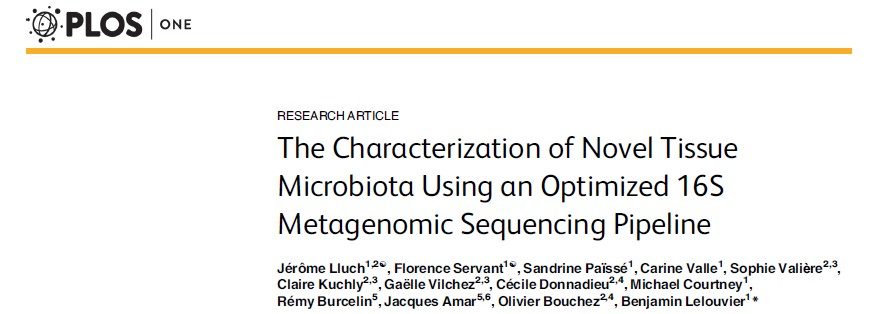The role of bacterial translocation in diabetes and the characterization of healthy tissue microbiota
A plethora of studies has associated the intestinal microbiota with numerous diseases including obesity and type 2 diabetes (T2D). Obesity is characterized by low-grade tissue inflammation and is a known risk factor for developing T2D. The obese phenotype is transferable from obese to lean mice through fecal microbiota transplantation and the obese microbiome has been shown to harvest more energy from the diet. However, how the gut microbiota can specifically affect tissue inflammation remained elusive.
In 2011, Amar and colleagues elucidated the missing link between gut microbiota, obesity and systemic inflammation in the onset of T2D. High-fat diet in mice promoted the mucosal adherence of gram-negative bacteria. These bacteria and/or their metabolites such as lipopolysaccharides (LPS) then translocated to the adjacent mesenteric adipose tissue (MAT) due to the immune system trapping bacteria and infiltrating adipose depots. This bacterial translocation initiated the low-grade inflammation before the onset of T2D. This study opened avenues for new therapeutic strategies in metabolic diseases.
Bacterial translocation does not only occur between the gut and the adjacent organs but bacteria and bacterial components (DNA, LPS and other metabolites) can also translocate into the blood. Previous work showed that mice chronically infused with a low dose of LPS developed inflammation and diabetes. From these data, Amar and colleagues translated to humans their demonstration in an animal model of the involvement of bacterial translocation and tissue bacteria in the onset of T2D. They showed for the first time that the amount of bacterial 16S rRNA genes in blood predicted the onset of T2D and abdominal adiposity. This study highlighted the blood microbiome in human pathologies and paved the way to the discovery of new biomarkers.
These two studies by Amar et al. in 2011 showed that bacteria and bacterial components existed elsewhere than in organs in contact with the outer environment such as the gastrointestinal tract. However, the microbiome of internal organs and body fluids is more challenging to explore than the gut microbiota. Therefore, molecular techniques that had been used until then to describe bacterial communities needed to be developed and optimized for low bacterial biomass samples. In 2015, Lluch and colleagues published such a targeted metagenomic approach. They described in healthy mice the microbiome of muscle, MAT, liver, heart and brain in comparison to gut microbiota (feces and ileum). All these tissues exhibited a specific microbial signature that was shared amongst individuals, thus providing further proof of the existence of healthy microbiomes in internal tissues. Then in 2016, Païssé et al., using the same approach described the blood microbiome in healthy blood donors. The circulating microbiome was predominantly associated with the buffy coat (~94% of bacterial DNA) whereas plasma encompassed less than 0.1% of bacterial DNA. Red blood cells harbored a different bacterial signature from buffy coat and plasma.
Together these founding studies established the role of bacterial translocation and the importance of exploring tissue microbiomes to better understand the onset of pathologies associated with gut microbiota dysbiosis. Moving beyond the study of the gut microbiota to explore the microbiome of tissues and body fluids now appears essential.
CITATIONS

Intestinal mucosal adherence and translocation of commensal bacteria at the early onset of type 2 diabetes: molecular mechanisms and probiotic treatment
By Vaiomer founders
Amar J, Chabo C, Waget A, Klopp P, Vachoux C, Bermúdez-Humarán LG, Smirnova N, Bergé M, Sulpice T, Lahtinen S, Ouwehand A, Langella P, Rautonen N, Sansonetti PJ, Burcelin R. EMBO Mol Med. 2011 Sep;3(9):559-72. doi: 10.1002/emmm.201100159. Epub 2011 Aug 3. PMID: 21735552; PMCID: PMC3265717.
A fat-enriched diet modifies intestinal microbiota and initiates a low-grade inflammation, insulin resistance and type-2 diabetes. Here, we demonstrate that before the onset of diabetes, after only one week of a high-fat diet (HFD), live commensal intestinal bacteria are present in large numbers in the adipose tissue and the blood where they can induce inflammation. This translocation is prevented in mice lacking the microbial pattern recognition receptors Nod1 or CD14, but overtly increased in Myd88 knockout and ob/ob mouse. This ‘metabolic bacteremia’ is characterized by an increased co-localization with dendritic cells from the intestinal lamina propria and by an augmented intestinal mucosal adherence of non-pathogenic Escherichia coli. The bacterial translocation process from intestine towards tissue can be reversed by six weeks of treatment with the probiotic strain Bifidobacterium animalis subsp. lactis 420, which improves the animals’ overall inflammatory and metabolic status. Altogether, these data demonstrate that the early onset of HFD-induced hyperglycemia is characterized by an increased bacterial translocation from intestine towards tissues, fuelling a continuous metabolic bacteremia, which could represent new therapeutic targets.

Involvement of tissue bacteria in the onset of diabetes in humans: evidence for a concept
By Vaiomer founders
Amar J, Serino M, Lange C, Chabo C, Iacovoni J, Mondot S, Lepage P, Klopp C, Mariette J, Bouchez O, Perez L, Courtney M, Marre M, Klopp P, Lantieri O, Doré J, Charles M, Balkau B, Burcelin R; D.E.S.I.R. Study Group. Diabetologia. 2011 Dec;54(12):3055-61. doi: 10.1007/s00125-011-2329-8. PMID: 21976140.
Aims/hypothesis: Evidence suggests that bacterial components in blood could play an early role in events leading to diabetes. To test this hypothesis, we studied the capacity of a broadly specific bacterial marker (16S rDNA) to predict the onset of diabetes and obesity in a general population.
Methods: Data from an Epidemiological Study on the Insulin Resistance Syndrome (D.E.S.I.R.) is a longitudinal study with the primary aim of describing the history of the metabolic syndrome. The 16S rDNA concentration was measured in blood at baseline and its relationship with incident diabetes and obesity over 9 years of follow-up was assessed. In addition, in a nested case-control study in which participants later developed diabetes, bacterial phylotypes present in blood were identified by pyrosequencing of the overall 16S rDNA gene content.
Results: We analysed 3,280 participants without diabetes or obesity at baseline. The 16S rDNA concentration was higher in those destined to have diabetes. No difference was observed regarding obesity. However, the 16S rDNA concentration was higher in those who had abdominal adiposity at the end of follow-up. The adjusted OR (95% CIs) for incident diabetes and for abdominal adiposity were 1.35 (1.11, 1.60), p = 0.002 and 1.18 (1.03, 1.34), p = 0.01, respectively. Moreover, pyrosequencing analyses showed that participants destined to have diabetes and the controls shared a core blood microbiota, mostly composed of the Proteobacteria phylum (85-90%).
Conclusions/interpretation: 16S rDNA was shown to be an independent marker of the risk of diabetes. These findings are evidence for the concept that tissue bacteria are involved in the onset of diabetes in humans.

The Characterization of Novel Tissue Microbiota Using an Optimized 16S Metagenomic Sequencing Pipeline.
Vaiomer original work
Lluch J, Servant F, Païssé S, Valle C, Valière S, Kuchly C, Vilchez G, Donnadieu C, Courtney M, Burcelin R, Amar J, Bouchez O, Lelouvier B. PLoS One. 2015 Nov 6;10(11):e0142334. doi: 10.1371/journal.pone.0142334. PMID: 26544955; PMCID: PMC4636327.
Background: Substantial progress in high-throughput metagenomic sequencing methodologies has enabled the characterisation of bacteria from various origins (for example gut and skin). However, the recently-discovered bacterial microbiota present within animal internal tissues has remained unexplored due to technical difficulties associated with these challenging samples.
Results: We have optimized a specific 16S rDNA-targeted metagenomics sequencing (16S metabarcoding) pipeline based on the Illumina MiSeq technology for the analysis of bacterial DNA in human and animal tissues. This was successfully achieved in various mouse tissues despite the high abundance of eukaryotic DNA and PCR inhibitors in these samples. We extensively tested this pipeline on mock communities, negative controls, positive controls and tissues and demonstrated the presence of novel tissue specific bacterial DNA profiles in a variety of organs (including brain, muscle, adipose tissue, liver and heart).
Conclusion: The high throughput and excellent reproducibility of the method ensured exhaustive and precise coverage of the 16S rDNA bacterial variants present in mouse tissues. This optimized 16S metagenomic sequencing pipeline will allow the scientific community to catalogue the bacterial DNA profiles of different tissues and will provide a database to analyse host/bacterial interactions in relation to homeostasis and disease.

Comprehensive description of blood microbiome from healthy donors assessed by 16S targeted metagenomic sequencing.
Vaiomer original work
Païssé S, Valle C, Servant F, Courtney M, Burcelin R, Amar J, Lelouvier B. Transfusion. 2016 May;56(5):1138-47. doi: 10.1111/trf.13477. Epub 2016 Feb 10. PMID: 26865079.
Background: Recent studies have revealed that the blood of healthy humans is not as sterile as previously supposed. The objective of this study was to provide a comprehensive description of the microbiome present in different fractions of the blood of healthy individuals.
Study design and methods: The study was conducted in 30 healthy blood donors to the French national blood collection center (Établissement Français du Sang). We have set up a 16S rDNA quantitative polymerase chain reaction assay as well as a 16S targeted metagenomics sequencing pipeline specifically designed to analyze the blood microbiome, which we have used on whole blood as well as on different blood fractions (buffy coat [BC], red blood cells [RBCs], and plasma).
Results: Most of the blood bacterial DNA is located in the BC (93.74%), and RBCs contain more bacterial DNA (6.23%) than the plasma (0.03%). The distribution of 16S DNA is different for each fraction and spreads over a relatively broad range among donors. At the phylum level, blood fractions contain bacterial DNA mostly from the Proteobacteria phylum (more than 80%) but also from Actinobacteria, Firmicutes, and Bacteroidetes. At deeper taxonomic levels, there are striking differences between the bacterial profiles of the different blood fractions.
Conclusion: We demonstrate that a diversified microbiome exists in healthy blood. This microbiome has most likely an important physiologic role and could be implicated in certain transfusion-transmitted bacterial infections. In this regard, the amount of 16S bacterial DNA or the microbiome profile could be monitored to improve the safety of the blood supply.
Expand your knowledge on the different microbiomes:
